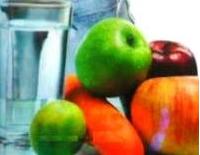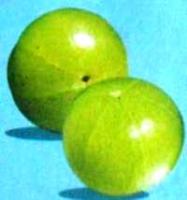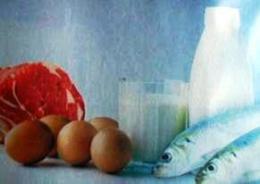When Ramu saw his grand mother plucking a few leaves from their fields, he asked, “What are you doing, grand mother? Why are you picking that waste grass from fields? For what purpose?” Grand mother ignored his question and just continued her process. Later she replied, “Leafy vegetables are rich in vitamins and vitamins are the vital nutrients needed for our body. “Though green leaves are the sources of vitamins, it’s also found plenty in fruits and normal vegetables. It is even found in milk, eggs, meat and fish, though they vary in different items. Vitamins are needed for the proper growth of our body as well as keeping us young, resistant to diseases. Not only for the proper growth of bones and eye health, but also for resisting cancers, vitamins play a vital role.
Beriberi paved way to the discovery of Vitamins
In some islands of East Asia including Japan and Korea beriberi, a disease was most common almost a century back. A Dutch doctor, Christiaan Eijkman proved that it was due to the deficiency of a certain substance in rice used by those people. Those people were using white rice than brown rice and it was Casimir Funk from Poland who isolated that substance from brown rice. That particular substance found in rice bran was a vitamin.
He found that it belonged to Amine (NH2) group and he named it Vitamine. In Latin, ‘vita’ means life and that’s the reason why he named so. But later, ‘e’ of the word Vitamine was cut as it was proved later, most of its components were not amines. So, the name Vitamin was conserved as such. Casimir funk successfully completed this process in the year 1912 and that’s the reason why ‘Vitamins is celebrating its 100th birthday now’. Through this article, let me give you a brief description about Vitamins.
Vitamins – 2 types
Vitamins are broadly classified into two groups – water soluble and insoluble vitamins. Vitamin B and C are soluble in water and they are directly absorbed by body from the food we intake. Through blood, it’s circulated throughout the body and excess is passed out through urine.
Vitamin A, D, E and K are soluble in fat. They are being absorbed along with fat by our body and hence they are stored in body tissues for future uses. So, if taken in excess these vitamins can cause many disorders and unhealthy conditions to our body.
Different vitamins and their chemical names
Let me now give you the nomenclature of reclassified vitamins along with its year of discovery.
Vitamin A – Retinol (1913)
Vitamin B1 - Thiamine (1910)
Vitamin B2 - Riboflavin (1920)
Vitamin B3 – Niacin (1936)
Vitamin B5 - Pantothenic acid (1931)
Vitamin B6 – Pyridoxine (1934)
Vitamin B7 – Biotin (1931)
Vitamin B9 - Folic acid (1941)
Vitamin B12 – Cyanoclobalamin (1926)
Vitamin C - Ascorbic acid (1920)
Vitamin D - Calciferol (1920)
Vitamin E – Tocopherol (1922)
Vitamin K - Phylloquinone (1929)
Niacin for digestion
Niacin plays an important role in the correct functioning of digestive enzymes. Deficiency of niacin can lead to mental illness, stress etc and one such disease is pellagra. 17mg of niacin is needed daily for our body and it’s found abundant in green vegetables, milk, butter, eggs, potato, wheat, cashews, prawns, mushrooms etc.
Mouth ulcers may be due to Riboflavin deficiency
Mouth ulcers, inflammation, swelling, cracked lips and cracks on either side of nose may be due to the deficiency of Riboflavin. It plays an important role in metabolism as well as re-formation of body tissues. It produces energy for the body and gives a healthy cornea as well. Milk, butter, eggs, almond etc are abundant in Riboflavin. We need 2 mg Riboflavin daily.
Vitamin A for good vision
For body growth, vision and healthy skin Vitamin A is most essential. It protects our body from diseases. This vitamin is derived from carotene and this function happens in liver. Loss of vision at night, dimness of vision, low defensive power against diseases and dry skin may be due to the deficiency of this vitamin.
Milk, fruits and vegetables contain this vitamin in plenty, particularly those colourful items. Thus, green, yellow and orange coloured vegetables and fruits are rich in Vitamin A. It is found in non-vegetarian items like meat, milk and eggs also.
Beauty vitamin
For healthy skin, vitamins are necessary. Healthy skin implies beauty and young skin. Vitamin E is known as ‘beauty vitamin’ as it improves skin health a lot. Sun flower oil, palm oil, groundnut oil, grains without removing the outer shell and oats are rich in this beauty vitamin.
Healing vitamin
Vitamin most abundant in nature is vitamin C. It plays an important role in healing process and its deficiency leads to a condition known as scurvy. Deficiency may lead to many other health problems including sleeplessness, depression etc. fruits, vegetables, lemon, gooseberry, orange, guava, leafy vegetables and sprouted beans are rich in this healing vitamin. This vitamin may be lost with time and over heating. 30-50 milligram of vitamin C is needed daily.
Sunlight exposure for vitamin D
Sunshine vitamin – vitamin D is also known by this nick name as exposure of sunlight can help you to get this vitamin in plenty. This vitamin controls the amount of calcium in our body. Its deficiency may lead to rickets in kids and osteomalacia in adults. Kids and feeding mothers need them most and it’s found abundantly in fish, liver, butter, animal fats etc.
Medicine with the name lemon
Since scurvy is seen most in navigators, this disease is also known as ‘plaque of navigators’. In 1747, James Lind, a Scottish surgeon found that lemon juice is effective for this disease. Loss of strength of plaque, blood from plaque and low defense against diseases are the main symptoms of scurvy. Later it was found that lemon abundant in vitamin C is able to prevent the attack of this disease. Time span, heat, wind etc can reduce the amount of this vitamin in our body. Earlier navigators used to travel for days and month using tinned dry food which leads to the deficiency of this vitamin resulting in scurvy.
A small note on vitamin B
When vitamins were discovered about a century back, no one had a clear idea of chemical composition of each vitamin. Names were given A, B, C, D etc in the order they were found. Later only it was found that vitamin B has a lot of factors and mixture of components. Then, naming was started from B1 and it reached till B14. but later, some of them were exited from the category of vitamins. That’s the reason why vitamin B4 and vitamin B8 are not in the list of vitamins. Vitamin B is most essential for the metabolic activities of our body and it is most essential to convert stored fats to energy. Vitamin B is a composition of different factors such as niacin, riboflavin, thiamin etc.
B12 is most essential for the production of red blood corpuscles and its deficiency may lead to pernicious anemia. Cyanoclobalamin is found in abundant in eggs, milk, butter and almost all vegetables. Vitamin B12 is most found in non-vegetarian items like meat, eggs and fish. It’s also found in milk. Though it is needed a little, it can’t be neglected.
Pyridoxine helps in the proper functioning of brain as well as defensive mechanism of our body. It helps in the processing of proteins, carbohydrates and fats of our digested food. B6 is found abundant in cabbage, cauliflower, broccoli, banana, cashew nuts etc.
Thiamin, also known as vitamin B is most essential for our metabolic activities. It influences the functioning of our nervous system and muscular activities. Beriberi is formed due to the deficiency of this vitamin. Brown rice, wheat, vegetables, fruits, potato and cashew nuts are rich in this vitamin. A person needs 1.5mg of thiamin every day.
So, we have come to an end of a brief summary of vitamins and its derivatives. So, it’s clear, vitamins are most essential for almost all activities of our body and its deficiency may lead to many diseases. It is most found in vegetables and fruits and follow a healthy diet so that you can supply all vitamins needed for the healthy functioning of your body.



